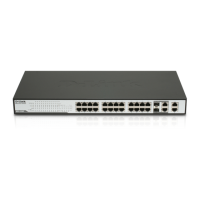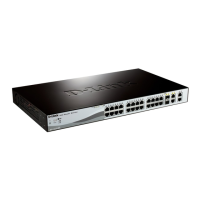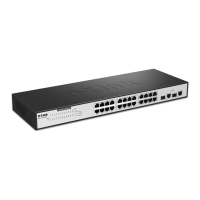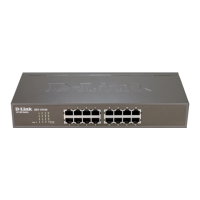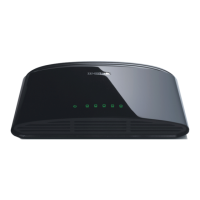MAC address into the forwarding state and other interfaces will be blocked. Remember
that lower priority values mean higher priorities for forwarding packets.
Parameters
<portlist> − Specifies a port or range of ports to be configured.
instance_id <value 0-8> − Enter a numerical value between 0 and 8 to identify the
instance_id previously configured on the Switch. An entry of 0 will denote the CIST
(Common and Internal Spanning Tree).
internalCost – This parameter is set to represent the relative cost of forwarding packets to
specified ports when an interface is selected within a STP instance. The default setting is
auto. There are two options:
auto – Selecting this parameter for the internalCost will set quickest route
automatically and optimally for an interface. The default value is derived from the
media speed of the interface.
value 1-200000000 – Selecting this parameter with a value in the range of 1-
200000000 will set the quickest route when a loop occurs. A lower internalCost
represents a quicker transmission.
priority <value 0-240> − Enter a value between 0 and 240 to set the priority for the port
interface. A higher priority will designate the interface to forward packets first. A lower
number denotes a higher priority.
Restrictions Only Administrator-level users can issue this command.
Example usage:
To designate ports 1 through 5, with instance id 2, to have an auto internalCost and a priority of 16:
show stp
Purpose Used to display the Switch’s current STP configuration.
Syntax
show stp
Description This command displays the Switch’s current STP configuration.
Parameters None
Restrictions None.
Example usage:
To display the status of STP on the Switch:
Status 1: STP enabled with STP compatible version
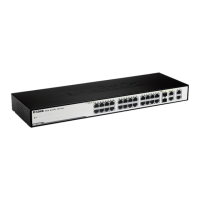
